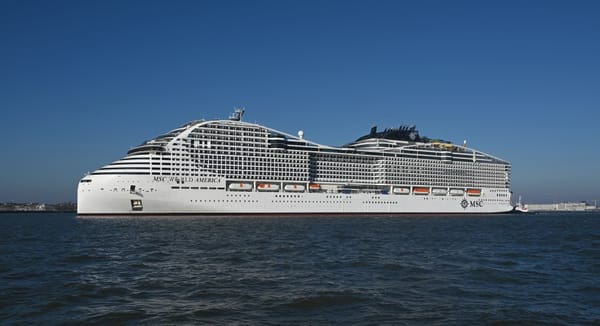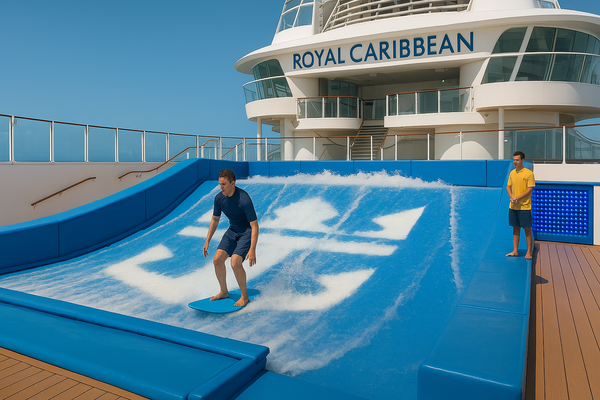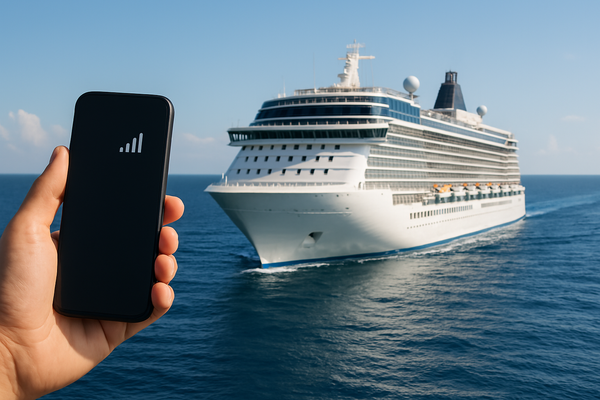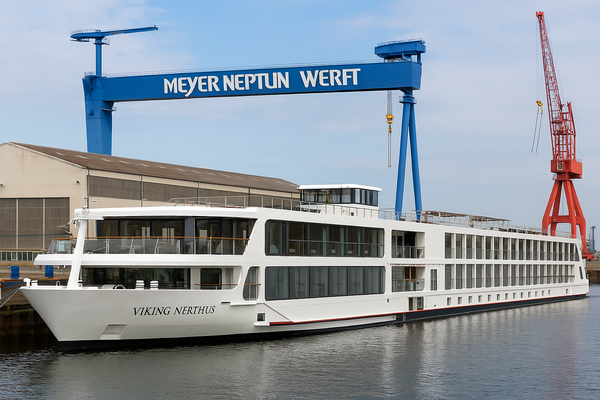Inside the cruise ship construction journey

The construction of cruise ships is a highly intricate and lengthy process that takes anywhere from two to three years from the initial concept to the final outfitting. It involves multiple stages, including design, component fabrication, hull assembly, and interior outfitting, which all come together to create the luxurious vessels seen on the seas today.
A recent tour of the Norwegian Cruise Line’s newest ship, Norwegian Aqua, conducted at the Fincantieri shipyard in Venice, Italy, provided a closer look at how these majestic ships are built. With 98% of cruise ships constructed in Europe, shipbuilders like Fincantieri play a significant role in this industry. Other notable shipbuilders include Chantiers de l’Atlantique in France, Meyer Werft in Germany, and Meyer Turku in Finland.
The Shipbuilding Timeline
According to Patrik Dahlgren, Executive Vice President and Chief Vessel Operations Officer at Norwegian Cruise Line Holdings, the process begins long before construction commences. The ideation starts with teams reviewing past projects, focusing on what elements were successful in earlier ships, and how to apply those lessons to new designs.
Once the concept is validated, the company enters discussions with shipbuilders to secure a timeline. The complexity of designs and features influences how long it may take to deliver the finished ship. For instance, while Norwegian Aqua is set to make its debut next year, the initial phases for new ships, such as the Norwegian Luna slated for 2026, have already begun.
From Concepts to Components
Traditionally, all ship parts were constructed on-site, but modern practices have shifted toward an efficient prefabrication model. Components are created off-site in specialized facilities and transported to the shipyard for assembly, leading to improved construction speed and efficiency.
As noted by Dahlgren, it’s akin to assembling a puzzle; every piece must fit perfectly. This modern process allows for simultaneous development of different ship sections and has drastically increased the overall speed of shipbuilding.
The Assembly Process
Once the individual components arrive at the shipyard, they go through a systematic assembly. The hull is constructed first in a dry dock, where the foundational structure is established. Following the hull’s construction, the dry dock is flooded, allowing the ship to float for the first time.
At this stage, the interior outfitting begins, which is where the magic happens. Thousands of skilled workers install intricate systems such as piping, electrical wiring, and HVAC ductwork. This extensive process also includes creating beautiful and functional spaces designed for guest engagement and comfort.
Modern Amenities and Challenges
Providing modern amenities for guests is a significant focus during ship construction. Emanuele Truant, NCL Project VP at Fincantieri, emphasized the challenges posed by the Aqua Slidecoaster, a unique combination waterslide and roller coaster, which involves around 40 tons of water and meticulous engineering considerations.
The structure of contemporary cruise ships accommodates such features on higher levels, ensuring that the ships remain stable while offering exciting attractions. The engineering behind these amenities demonstrates the constant innovation within the cruise ship construction industry.
Furniture and Aesthetics
The aesthetic appeal of a ship is carefully crafted through collaboration between in-house architects and external designers. Custom-made furniture is designed specifically for the cruise environment, with every piece needing to withstand harsh ocean conditions, especially for outdoor areas.
Staterooms, too, are built as complete units that are added to the ship once fully outfitted, streamlining the installation process. This pre-built methodology allows for higher quality assurance as furnishings are tailored to fit the specific needs of each space.
Final Steps: Commissioning and Sea Trials
Once construction is largely complete, the final steps are commissioning, where all systems are tested at the shipyard, followed by sea trials. Sea trials, typically done around four months before delivery, are crucial for identifying any last-minute issues that require attention.
During the construction tour of Norwegian Aqua, it was noted that while the visible work might seem incomplete only months away from its launch, the shipbuilding industry operates under a different timeline. Dahlgren indicated that the ship was already 96% complete at the time of the visit, altering expectations of how progress appears compared to construction on land.
The Future of Cruise Ship Construction
Norwegian Cruise Line is committed to continuing its legacy of innovative shipbuilding. With feedback from past voyages, the company aims to create vessels that not only meet the expectations of travelers but also align with industry advancements and sustainability goals.
The maritime industry is evolving, and with it, the construction processes are adapting to foster efficiency, sustainability, and luxury on the seas. As the company works towards future ships, their commitment to innovation and quality remains unwavering.
Conclusion
The construction of cruise ships is a multi-year endeavor that draws heavily on engineering expertise, architectural artistry, and innovative design. From complex rides to spacious accommodations, each vessel’s creation is a collaborative push towards creating exhilarating experiences for future cruisers.
FAQs
1. How long does it take to build a cruise ship?
Typically, cruise ships take between two to three years from concept to delivery, depending on complexity and design features.
2. Where are most cruise ships built?
The majority of cruise ships, about 98%, are constructed in Europe, primarily in shipyards located in Italy, France, Germany, and Finland.
3. What is the process of outfitting a cruise ship?
The outfitting process involves installing vital systems like plumbing, electrical wiring, and HVAC along with creating luxurious interiors and amenities.
4. How are contemporary cruise ship designs developed?
Design is a collaborative effort between in-house architects and external firms, focusing on both aesthetics and functionality to enhance the passenger experience.
5. What types of amenities can be found on modern cruise ships?
Modern cruise ships offer a variety of amenities including restaurants, lounges, theaters, pools, and unique attractions like waterslides and roller coasters.




